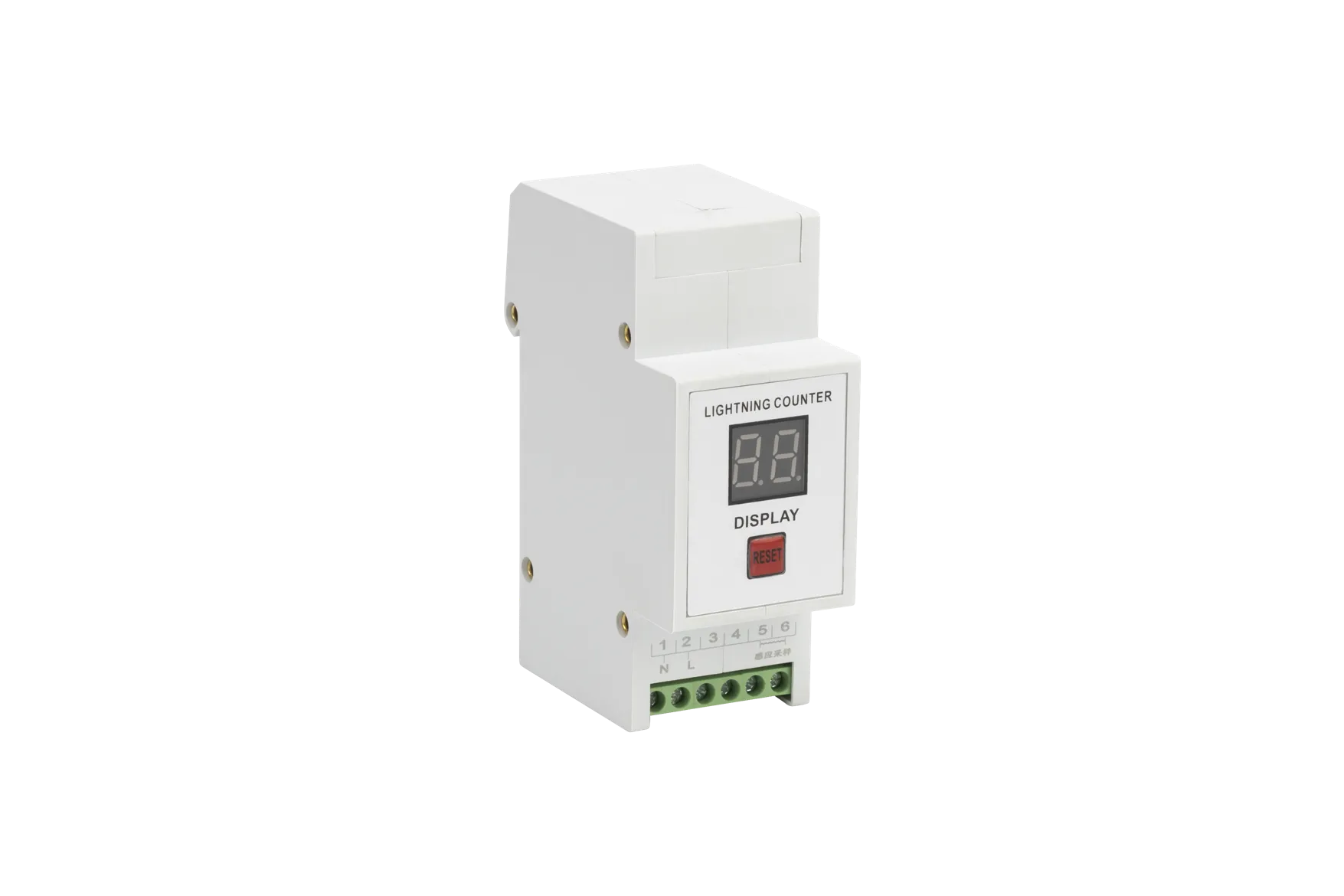What is thunder and lightning?
Lightning is a violent discharge phenomenon that occurs in the atmosphere. It has the characteristics of large current, high voltage, strong electromagnetic radiation, etc. It usually occurs under thunderstorm conditions. A large amount of heat is generated during discharge, causing the surrounding air to expand rapidly, causing rumbling thunder.
When lightning and thunder occur, due to the huge energy released by lightning, coupled with strong shock waves, drastic changes in electrostatic fields and strong electromagnetic radiation, it often causes casualties of humans and animals, damages buildings, causes fires, and causes damage to power, communication and computer systems paralysis accident.
How do lightning counters work?
When lightning flows to the ground through the lightning protection system, the lightning counter can sense and detect the current passing through the lightning conductor, and the device will record the number of lightning strikes so that personnel can analyze and evaluate the thunderstorm conditions in the area and detect the working status of the lightning protection equipment. . The current that can be recorded is usually within a range of values, and currents that are too small will not be recorded.
Lightning strike counters can provide statistical data on thunderstorm activities, such as lightning strike frequency, lightning strike intensity, lightning strike distribution, etc. These data have important reference value for thunderstorm warning, lightning protection design, lightning protection equipment selection, lightning protection effect evaluation, etc.
The lightning strike counter can monitor the working status of lightning protection equipment, such as lightning rods, down conductors, grounding devices, surge protectors, etc. By comparing the records of the lightning strike counter with the number of discharge actions of the lightning protection equipment, it can be judged whether the lightning protection equipment is normal or not. work, whether repair or replacement is needed to ensure the reliability and effectiveness of lightning protection equipment.
Lightning strike counters can provide evidence of lightning accidents, such as lightning damage, lightning injuries, lightning fires, etc. By viewing the records of the lightning strike counter and the lightning strike time, the time and cause of the lightning accident can be determined, providing a basis for handling and compensation of lightning accidents.
What applications can lightning counters be used for?
As an instrument that records the number of lightning current strikes, lightning counters are widely used. Various industries select adapted lightning counters and other lightning protection equipment according to different lightning protection requirements and lightning protection standards to achieve effective lightning protection.
Electric power industry: The electric power industry is a high-risk industry due to lightning. Thunder and lightning can cause serious damage and impact to electrical equipment, such as voltage fluctuations, power interruptions, equipment burning, casualties, etc.
Communication industry: The communication industry is the hardest hit area by lightning. Lightning has great damage and impact on communication equipment, such as signal interruption, data loss, equipment damage, personal injury, etc.
Transport industry: The transportation industry is an important target affected by lightning. The damage and impact of lightning on transportation equipment is very obvious, such as signal failures, operation delays, equipment failures, personal injuries, etc.
Is the installation of lightning counter complicated?
Installing a lightning strike counter is usually not complicated. Some lightning strike counters are installed on standard rails, and the inductance probe is installed on the wire through which the lightning current passes (usually the ground wire).
How to maintain lightning counters?
In order to ensure the accuracy and reliability of the lightning strike counter, it is necessary to check the down conductor connection and the grounding wire connection every once in a while, and also observe whether there are any obvious signs of damage on the lightning counter casing.
Does the lightning counter require an external power source or a built-in battery to operate?
Depending on the design, lightning counters can run on external power or on built-in batteries, and some types of lightning counters connect directly to the power system.
Which design to use usually needs to take into account the actual application scenario. Some better products will support multiple power modes to support more comprehensive applications.


One response to “TRSC Lightning Counter”
so expensive material